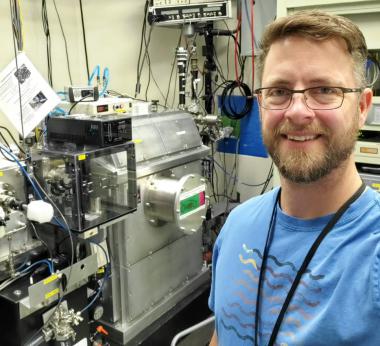Digging deep into critical earth zone processes
Bryan worked tirelessly to formulate, execute, and complete a dissertation that built on key findings and questions emerging from our National Science Foundation Critical Zone Observatory project.
- Dr. Jon Chorover, nominator and faculty adviser
Tell us a little about yourself.
I’ve always had an interest in environmental justice, but I realized early on that to have the biggest impact, you have to have the best training. Coming back to pursue my doctorate with Jon Chorover was one of the best career decisions I’ve made.
I grew up outside of Denver, Colorado spending most of my childhood outside and playing organized sports. I majored in geology so I could be outside, but had no interest in working for the exploitative resource extraction industry.
It was during my Peace Corps experience in Benin, West Africa for three years that I saw the direct impacts of poor environmental stewardship on public health, water and food scarcity, and vulnerable populations.
When I came back to the US, I wanted to focus on water and the environment and ended up with a MS in hydrogeology at Washington State University. My wife wanted to do an MPH degree at the University of Arizona, which brought us to Tucson, and I then completed a second MS in environmental engineering.
I worked as a hydrogeologist for a consulting company in Tucson, working mainly on environmental projects for the mining industry, but wanted to get back into research and joined the Chorover biogeochemistry research group in 2015 to work in critical zone science.
What is your research and what are the broader impacts?
Moravec at Canadian Lightsource in Saskatoon.jpg

My doctoral research focuses on describing deep critical zone processes in the Jemez River Basin in the Catalina-Jemez Critical Zone Observatory. I explored the role of critical zone architecture, with a focus on coupled processes, in hydrologic flowpath evolution, biogeochemical reaction pathways, weathering dynamics, and solute transport.
I used an interdisciplinary approach to address my research questions, combining field-based investigation with laboratory-based analysis to understand systems from the pore to watershed scale.
Located in the Valles Caldera, NM, I studied critical zone processes as a function of geologic variability. This means understanding the role of past events in setting weathering trajectories and understanding the role of surfaces in driving critical zone processes at depth (e.g. weathering, microbial activity, fluid/surface interactions, water chemistry).
Key Takeaways:
- Surfaces in weathering profiles play a fundamental role in fluid chemistry, ion and carbon mobility, microbial activity potential, porosity development, secondary mineral phase dynamics, weathering potential, and fluid transport.
- Past geologic events (e.g., hydrothermal alteration) alter the critical zone in terms of mineral assemblages, surface area and chemistry, and structure, which, in turn, fundamentally change fluid flow and storage potential and weathering dynamics, geochemistry, and trajectory (under contemporary forcing) compared to unaltered material.
- Critical zone evolution and architecture of this small sub-alpine catchment in northern New Mexico is relevant to understanding greater watershed morphology and water resource dynamics in the intermountain west and the headwaters of the Rio Grande basin.
What did you enjoy most about graduate school and your research?
Graduate school was a time to explore my research interests, leverage my professional experience, and participate in a large research project.
I particularly enjoyed field work in the Valles Caldera. I’m a firm believer that hands-on experience is the best way to learn, and I feel like I had plenty of opportunity to get my hands dirty in graduate school.
Future plans?
Right now, I’m a postdoctoral fellow working on the fate and transport of metals in old and abandoned mine tailings at Superfund sites across the western US. It’s mining related, with a critical zone spin to it, which is where I want my future research to end up.
I’m also looking forward to learning reactive transport modeling with Drs. Jon Chorover and Mark Brusseau. I hope to land a faculty position at a research university in the US or abroad, continuing to use a multidisciplinary approach to my research and help train the next generation of scientists.
Words of advice?
Graduate school is a marathon and you will have good and bad days. The hardest part is when you get towards the end. Be patient with yourself, come in with a plan and break everything down into achievable milestones. But most of all, enjoy the experience.


